Gabon Flag Meaning
Three horizontal stripes of green, yellow, and blue representing Gabon's equatorial forests, the equator itself, and the Atlantic Ocean, adopted upon independence from France.
- Continent
- Africa
- Adopted
- 1960
- Ratio
- 3:4
- Colors
- green, yellow, blue
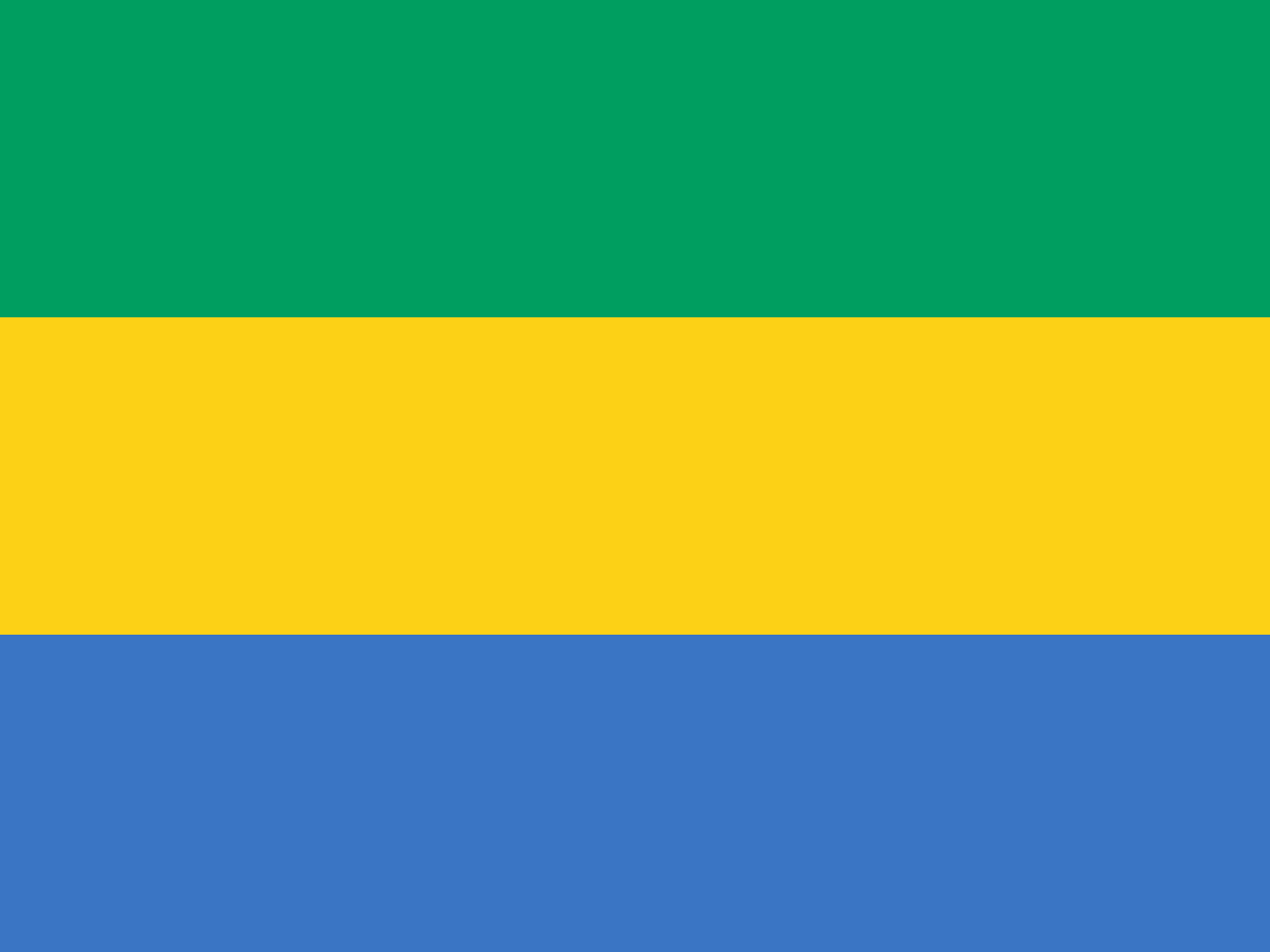
Symbolism
Green Stripe: Represents Gabon's vast tropical rainforests that cover about 85% of the country, making it one of the most forested nations in Africa and a crucial part of the Congo Basin ecosystem.
Yellow Stripe: Symbolizes the equator that runs through Gabon and the sun that shines year-round in this equatorial climate. Also represents the country's mineral wealth, particularly gold and uranium.
Blue Stripe: Represents the Atlantic Ocean that borders Gabon's western coast, providing maritime access and supporting the country's fishing industry and oil exploration offshore.
Horizontal Arrangement: The horizontal stripes represent the natural progression from the ocean through the equatorial line to the dense forests, depicting Gabon's geography from coast to interior.
Natural Heritage: The flag's colors emphasize Gabon's commitment to environmental preservation and its identity as one of Africa's most ecologically diverse and protected nations.
History
- 1839-1960: Gabon was part of French Equatorial Africa, using French colonial flags while traditional kingdoms like the Mpongwe and Fang maintained their own symbols and traditions.
- 1958: Gabon became an autonomous republic within the French Community, beginning the transition toward independence and the development of national symbols.
- August 9, 1960: Upon gaining independence from France, Gabon officially adopted the green, yellow, and blue tricolor as its national flag, representing the country's natural features.
- 1960s-1967: Under President Léon M'ba, the flag became established as a symbol of Gabonese sovereignty and the country's unique position as an oil-rich, forest-covered equatorial nation.
- 1967-2009: During Omar Bongo's long presidency, the flag remained unchanged and became internationally recognized, particularly as Gabon developed its oil industry and conservation programs.
- 2009-Present: Under President Ali Bongo Ondimba, the flag continues to represent Gabon's commitment to both economic development and environmental conservation in Central Africa.
- 1960-Present: The flag has remained completely unchanged since independence, making it one of the most stable national symbols in Africa over more than six decades.
Trivia
- Gabon's flag is one of the few national flags that directly represents a line of latitude, with the yellow stripe symbolizing the equator that passes through the country.
- The green stripe represents one of Africa's last great rainforests, with Gabon maintaining about 85% forest cover, among the highest percentages in the world.
- Gabon established 13 national parks in 2002, covering 11% of the country, making the green stripe's environmental symbolism particularly meaningful in conservation efforts.
- The flag's colors appear frequently in traditional Gabonese art and textiles, connecting modern national identity with historical cultural practices.
- Oil discoveries off Gabon's coast in the 1970s made the blue stripe symbolically important for representing the source of much of the country's wealth.
- The flag appears on Gabonese CFA franc banknotes alongside images of wildlife and forests, reinforcing the connection between national identity and natural heritage.
- Gabon is one of the few African countries where the forest actually expanded during the 20th century, making the green stripe's symbolism increasingly relevant.
- The flag's horizontal design differs from many other former French colonies that adopted vertical tricolors, making Gabon's choice distinctive in the region.
- During the 1970s oil boom, the flag became more internationally visible as Gabon's economic importance grew in Central Africa and global energy markets.
- The yellow stripe represents not only the equator but also Gabon's uranium deposits, making it one of Africa's important uranium producers alongside its oil wealth.
- Gabonese athletes have worn the flag colors prominently in Olympic Games, particularly in football and athletics, representing one of Africa's smallest but wealthiest nations.
- The flag protocol in Gabon requires it to be displayed on government buildings daily and on all schools during the academic year, emphasizing national education.
- Libreville, the capital, sits almost exactly on the equator, making the yellow stripe geographically precise for representing the country's location.
- The flag appears in Gabonese cultural festivals and traditional ceremonies, where the colors are often incorporated into traditional dress and decorations.
- Gabon's commitment to fighting climate change has made the green stripe internationally symbolic of responsible forest stewardship and carbon sequestration efforts.
Related Countries
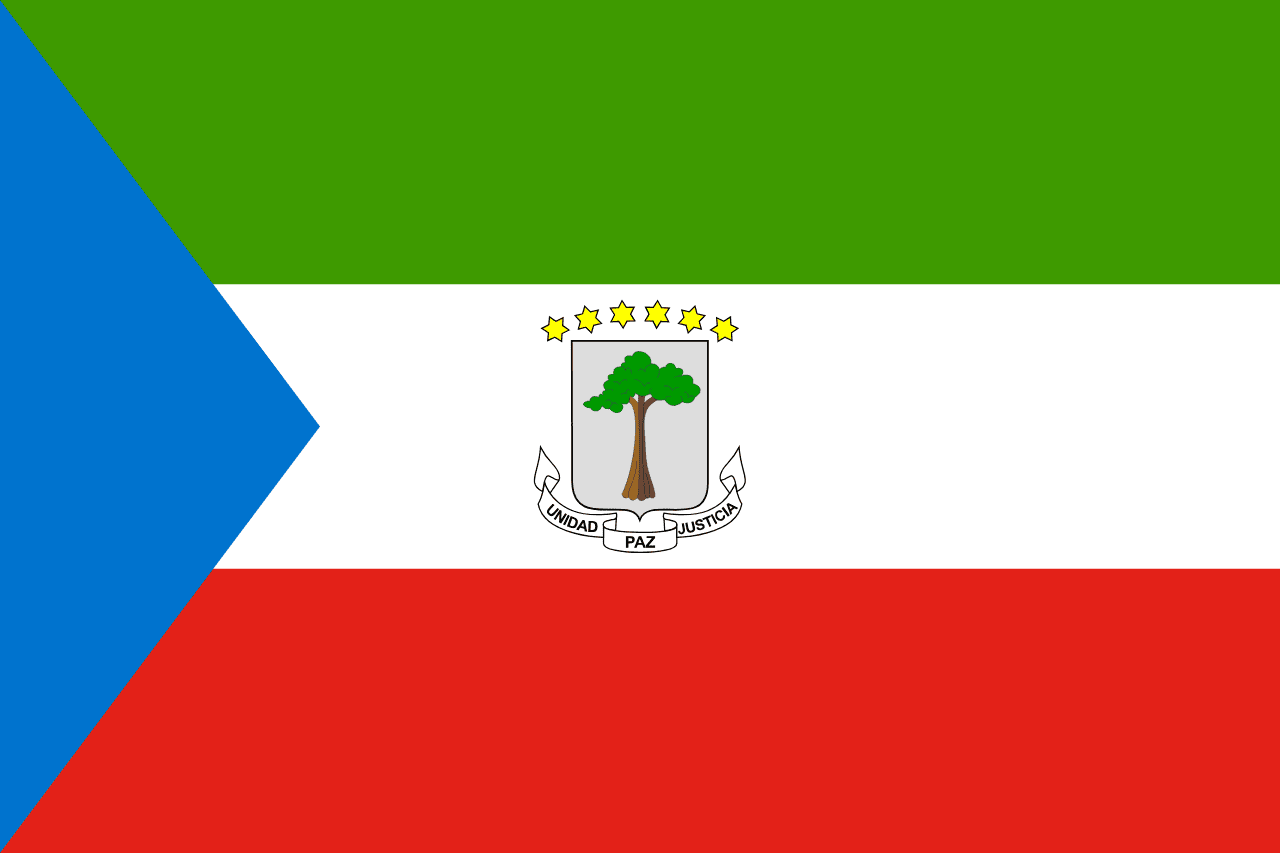
Equatorial Guinea
Africa
Three horizontal stripes of green, white, and red with a blue triangle at the hoist and the national coat of arms in the center, representing the country's forests, peace, independence struggle, and maritime heritage.
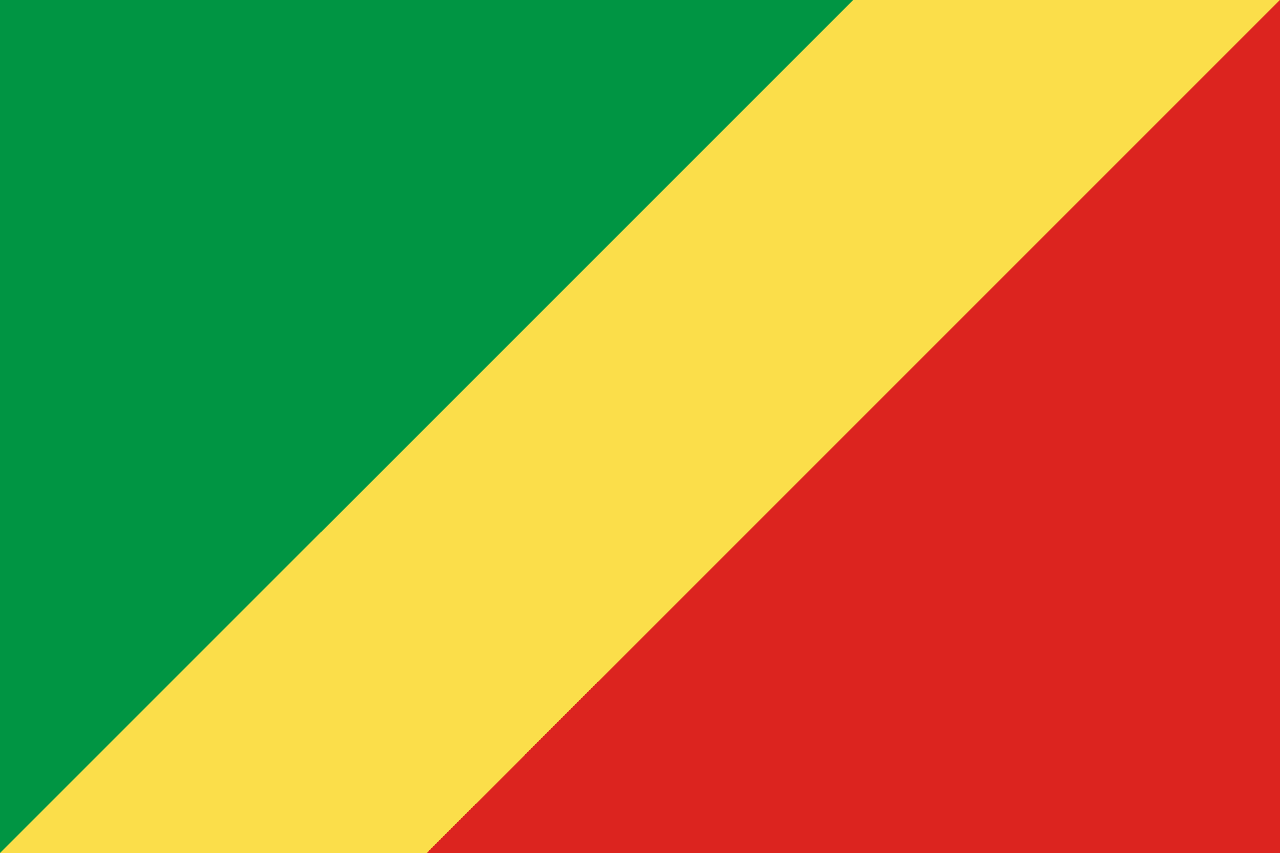
Republic of the Congo
Africa
A diagonal tricolor with green in the upper hoist, red in the lower fly, and yellow diagonal stripe separating them, representing the forests, the struggle for independence, and the friendship and nobility of the Congolese people.
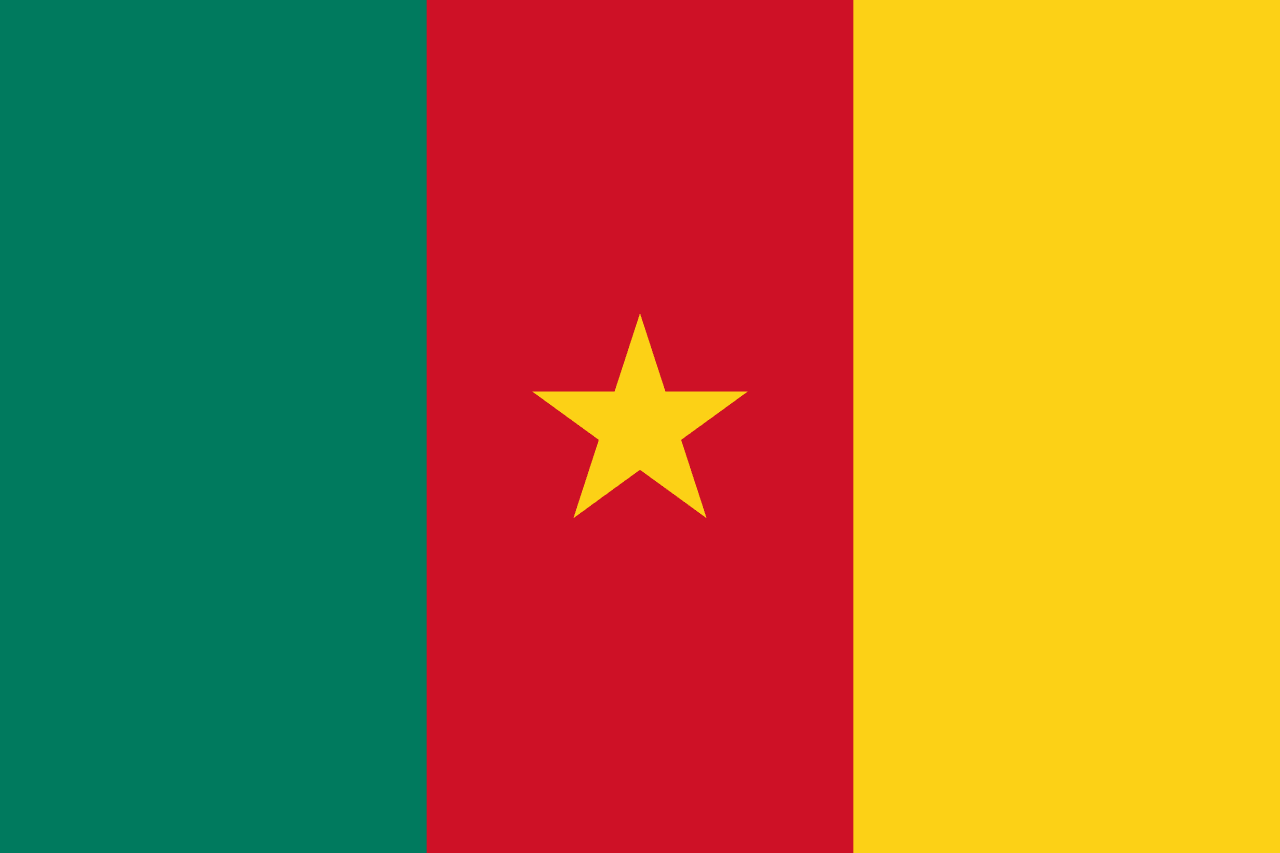
Cameroon
Africa
Three vertical stripes of green, red, and yellow with a yellow five-pointed star in the center of the red stripe, representing the forests, unity, the sun and savanna, and the unity of the diverse peoples of Cameroon.
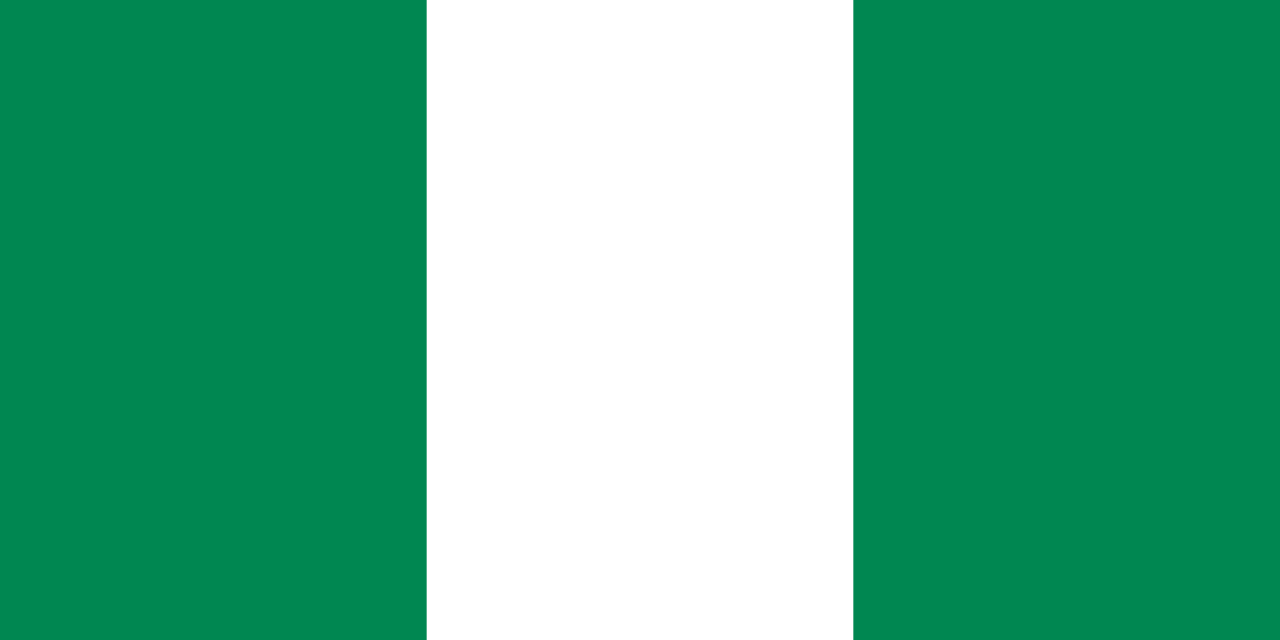
Nigeria
Africa
A vertical tricolor of green, white, and green. The flag was adopted at independence in 1960 and represents agriculture, unity, and peace.
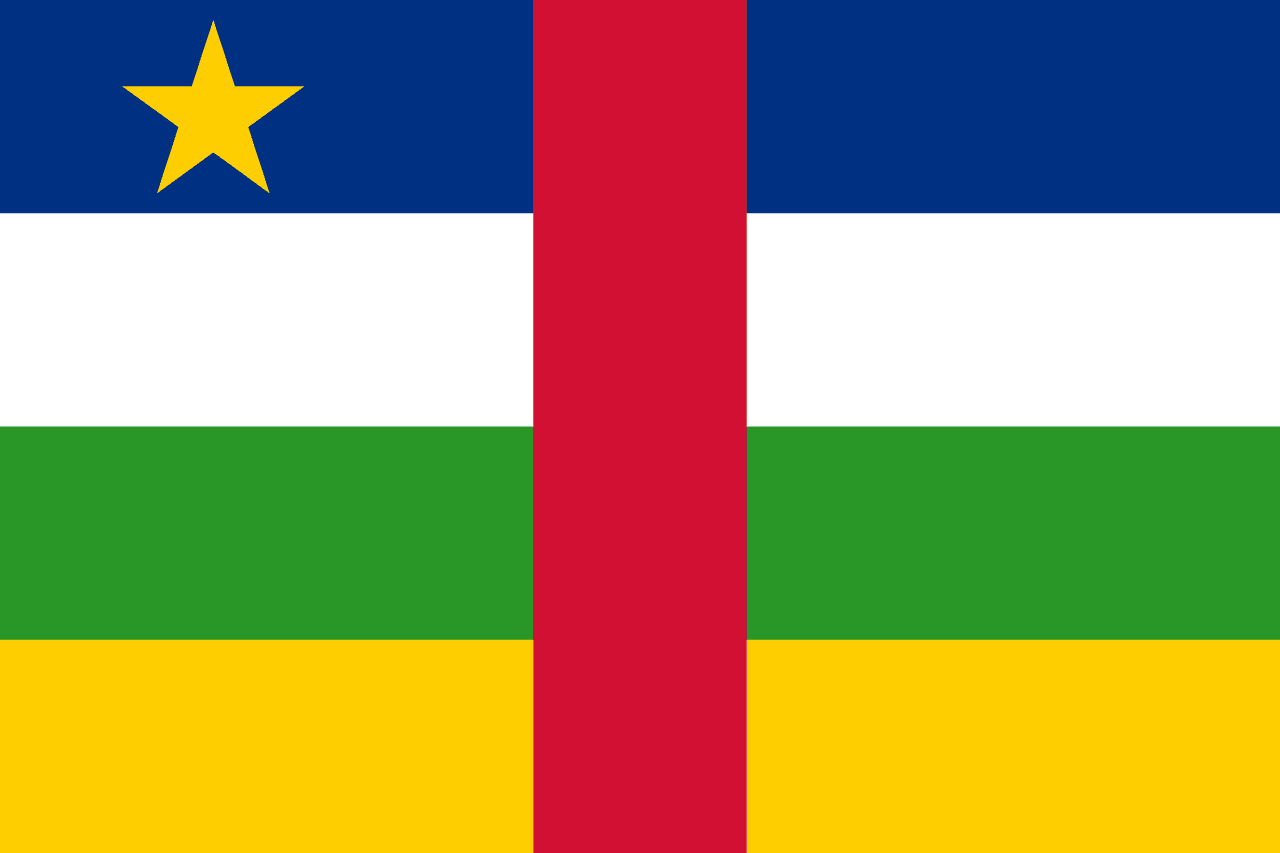
Central African Republic
Africa
Four horizontal stripes of blue, white, green, and yellow with a vertical red stripe through the center and a yellow five-pointed star in the upper hoist, combining Pan-African and French colors to represent unity and independence.
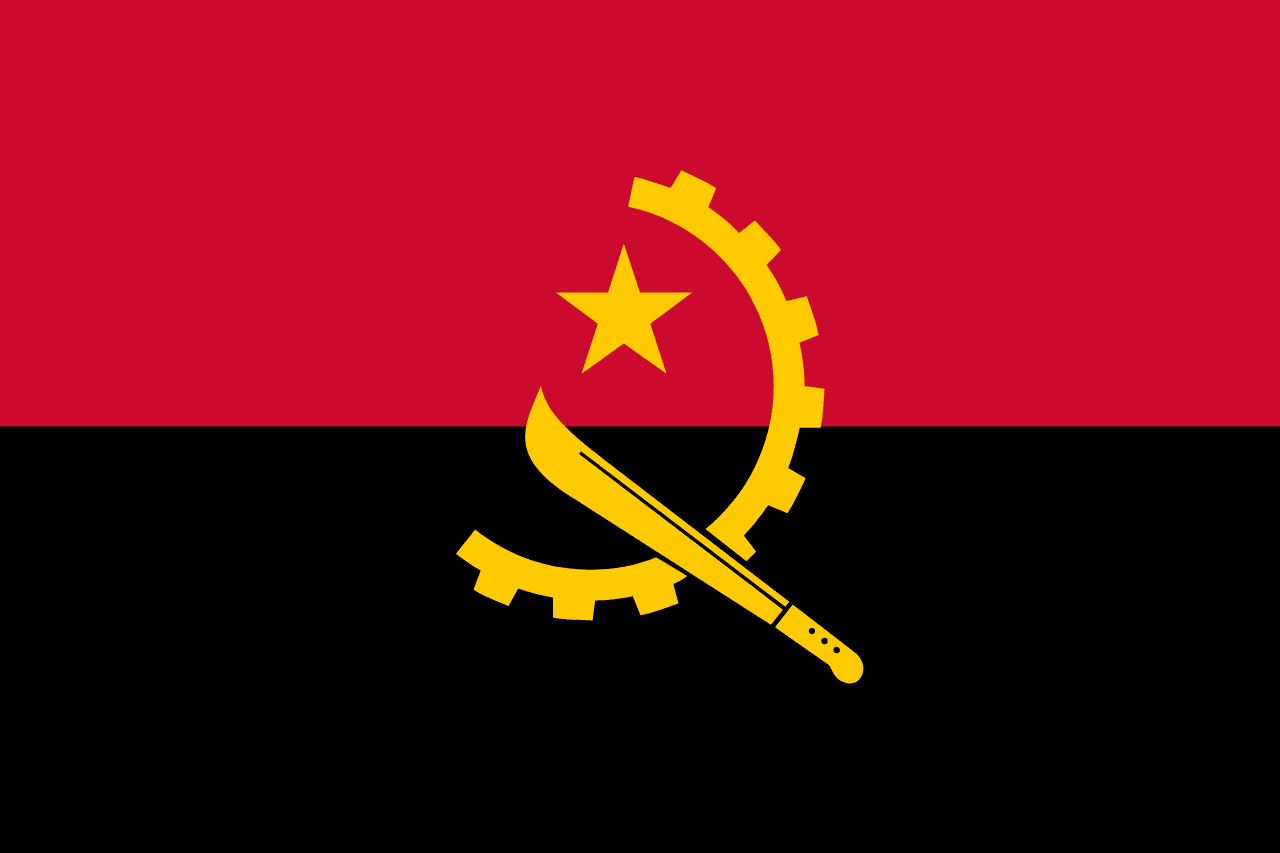
Angola
Africa
Two horizontal stripes of red and black with a yellow emblem in the center featuring a machete, star, and half gear wheel, representing the blood shed for independence, the African heritage, and the tools of liberation - agricultural work, socialism, and industrial progress.